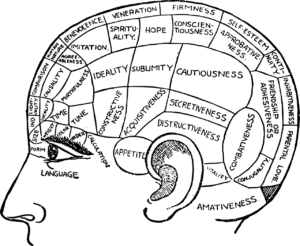
In November of 2016, the United States Surgeon General, Dr. Vivek Murthy, released a report called "Facing Addiction in America: The Surgeon General’s Report on Alcohol, Drugs and Health." One of the more startling facts to come out of the report was that one in seven Americans will face a substance addiction, and only 10% of those addicted will go on to seek treatment [1].
The Impact of Physical and Cognitive Disabilities on Addiction and Treatment
More research is needed to understand the connections between disabilities and addiction, but what we know now appears to indicate that those with disabilities may be more susceptible to addiction [2].
- Approximately 4.7 million people with disabilities have a co-occurring substance use disorder and
- 7–8 million people in the US with an intellectual disability (ID) suffer disproportionately from substance use problems
- ID substance abusers are less likely to receive substance abuse treatment or remain in treatment
In light of these risks, the Substance abuse and Mental Health Services Administration (SAMHSA) recently released an advisory [3] with several key findings:
- People with physical and cognitive disabilities have a higher prevalence of SMI and SUD, as well as lower Treatment rates for both conditions than do people without these disabilities.
- Mental and substance use disorder treatment providers may underestimate the barriers of accessibility to their programs for people with physical or cognitive disabilities, or they may have specific exclusion criteria for some people with disabilities.
- Physical and cognitive disabilities are not always obvious. Clients with such “invisible” disabilities may receive services that do not meet their mental and substance use disorder treatment needs.
- Behaviors associated with some cognitive disabilities may falsely be mistaken for willful non-adherence or lack of motivation.
- Providers should inform each client of the program’s ability to meet a range of access needs—and should act on access requests—to help ensure that clients with disabilities get the most out of their mental and substance use disorder treatment.
The main purpose of the SAMHSA advisory was to highlight how treatment programs can better serve people with physical and cognitive disabilities.
What are Physical and Cognitive Disabilities?
 According to the American Association on Intellectual and Developmental Disabilities, "intellectual disability is characterized by significant limitations both in intellectual functioning (reasoning, learning, problem-solving) and in adaptive behavior, which covers a range of everyday social and practical skills [4]."
According to the American Association on Intellectual and Developmental Disabilities, "intellectual disability is characterized by significant limitations both in intellectual functioning (reasoning, learning, problem-solving) and in adaptive behavior, which covers a range of everyday social and practical skills [4]."
The SAMSA advisory also discusses autism, which is considered a developmental disability, rather than a cognitive one. "Developmental disabilities are a group of conditions due to an impairment in physical, learning, language, or behavior areas. These conditions begin during the developmental period, may impact day-to-day functioning, and usually last throughout a person’s lifetime [5]."
The American Disabilities Act defines a physical disability as "Developmental disabilities are a group of conditions due to an impairment in physical, learning, language, or behavior areas. These conditions begin during the developmental period, may impact day-to-day functioning, and usually last throughout a person’s lifetime [6]."
Barriers to Treatment for Those with Disabilities
Seeking and entering treatment is an emotionally, relationally, and financially challenging experience for anyone. Those with disabilities will likely face additional challenges when considering treatment options.
- Accessibility issues - not all facilities are fully accessible to physically disabled clients. While they may technically meet the requirements of the American Disability Act, someone with a disability may have to take different routes to group rooms, offices, or other parts of a facility. These extra steps can cause the individual to feel more alienated and separate from the group than he or she already does.
- Lack of resources - Treatment centers often provide patient manuals, education, or therapy experiences that are not easy to access. For example, it would be unusual for treatment centers to provide a braille copy of the treatment manual for a visually impaired client.
- Environmental factors - for someone with a developmental disability such as autism, group settings, and community space used by clients may feel overstimulating and overwhelming and negatively impact his or her ability to process therapy and make changes.
- Human factors - as mentioned in the SAMHSA advisory, certain behaviors are expected and encouraged by professionals in the recovery process. These may be difficult for those with cognitive or developmental disabilities to achieve and could be interpreted as an unwillingness to participate in recovery.
Kim Clairy, now an occupational therapist, experienced some of these obstacles first hand. Diagnosed as an adult with autism and a sensory processing disorder, Kim had to navigate several treatment centers unfamiliar with how to help her recover from an eating disorder.
She now works with mental health professionals and treatment centers, educating them on how better to meet the needs of clients with developmental disorders.
Kim describes the difference one professional made in her recover, "[S]he was the first person willing to sit on the ground with me. She was able to come into my world without expectations without agendas and without judgment.
 She listened to my ways of communicating. She just listened. She accepted me, and she didn't try to fix me or tell me I was wrong, that I was feeling something I wasn't.
She listened to my ways of communicating. She just listened. She accepted me, and she didn't try to fix me or tell me I was wrong, that I was feeling something I wasn't.
"Often, providers will try to figure things out, they try to find a solution to a problem. But what if the problem they think exists, really doesn't exist. What if the “expert” is wrong?"
What if the person with autism is trying to communicate the problem, but the person who CAN help them is not really listening but instead is trying to fix something that isn't really broken, that isn't a problem?
The best way to help your patient is to listen. To really listen. Listen with them, not at them [7]."
How Treatment Professionals Can Help
The SAMHSA advisory is a rich resource with a number of recommendations treatment centers should consider if they want to improve access for those with disabilities. These include:
- Conducting an analysis of your treatment program from the perspective of a patient with a disability.
- Explore ways to improve accessibility (visit ADA.org for guidance)
- Review Intake and Admissions process and be sure to include questions that bring to light disabilities that might easily be missed
For more information download the entire SAMHSA Advisory at: https://store.samhsa.gov/product/Mental-and-Substance-Use-Disorder-Treatment-for-People-With-Physical-and-Cognitive-Disabilities/PEP19-02-00-002 and visit ADA.org
References:
[1] Hafner, J. (2016, November 17). Surgeon general: 1 in 7 in USA will face substance addiction. Retrieved October 1, 2019, from https://www.usatoday.com/story/news/nation-now/2016/11/17/surgeon-general-1-7-us-face-substance-addiction/93993474/.
[2] Shawna L.Carroll Chapman, L.-T. W. (2012, March 7). Substance abuse among individuals with intellectual disabilities. Retrieved October 1, 2019, from https://www.sciencedirect.com/science/article/abs/pii/S0891422212000376.
[3] Advisory: Mental and Substance Use Disorder Treatment for People With. (2019, September). Retrieved October 1, 2019, from https://store.samhsa.gov/product/Mental-and-Substance-Use-Disorder-Treatment-for-People-With-Physical-and-Cognitive-Disabilities/PEP19-02-00-002.
[4] Frequently Asked Questions on Intellectual Disability. (n.d.). Retrieved October 1, 2019, from https://aaidd.org/intellectual-disability/definition/faqs-on-intellectual-disability.
[5] https://www.cdc.gov/ncbddd/developmentaldisabilities/facts.html#ref
[6] https://adata.org/faq/what-definition-disability-under-ada
[7] Personal correspondence with the author
About the Author:
 Travis Stewart, LPC has been mentoring others since 1992 and became a Licensed Professional Counselor in 2005. His counseling approach is relational and creative, helping people understand their story while also building hope for the future. Travis has experience with a wide variety of issues which might lead people to seek out professional counseling help. This includes special interest in helping those with compulsive and addictive behaviors such as internet and screen addiction, eating disorders, anxiety, and perfectionism. Specifically, he has worked with eating disorders since 2003 and has learned from many of the field’s leading experts. He has worked with hundreds of individuals facing life-threatening eating disorders in all levels of treatment. Travis' website is wtravisstewart.com
Travis Stewart, LPC has been mentoring others since 1992 and became a Licensed Professional Counselor in 2005. His counseling approach is relational and creative, helping people understand their story while also building hope for the future. Travis has experience with a wide variety of issues which might lead people to seek out professional counseling help. This includes special interest in helping those with compulsive and addictive behaviors such as internet and screen addiction, eating disorders, anxiety, and perfectionism. Specifically, he has worked with eating disorders since 2003 and has learned from many of the field’s leading experts. He has worked with hundreds of individuals facing life-threatening eating disorders in all levels of treatment. Travis' website is wtravisstewart.com
The opinions and views of our guest contributors are shared to provide a broad perspective of addictions. These are not necessarily the views of Addiction Hope, but an effort to offer a discussion of various issues by different concerned individuals.
We at Addiction Hope understand that addictions result from multiple physical, emotional, environmental and genetic factors. If you or a loved one are suffering from an addiction, please know that there is hope for you, and seek immediate professional help.
Reviewed and Approved by Jacquelyn Ekern, MS, LPC on October 4, 2019
Published October 4, 2019, on AddictionHope.com
